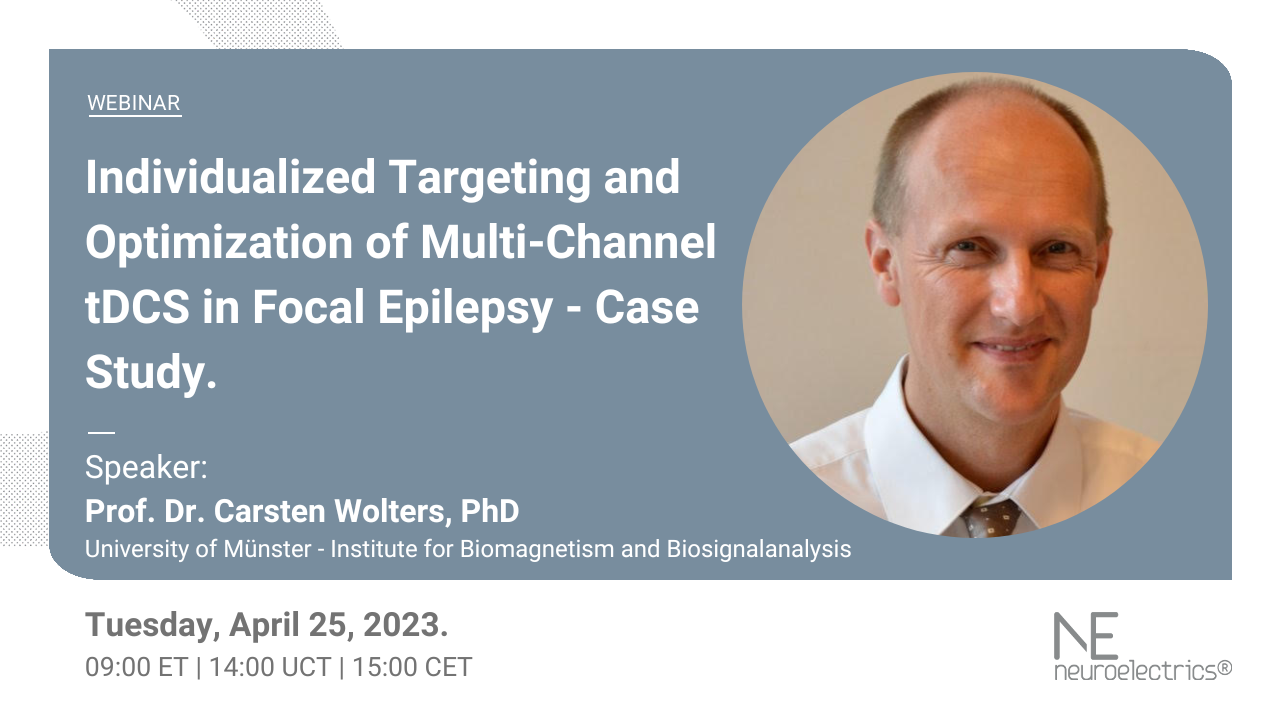Webinar | Individualized Targeting and Optimization of Multi-Channel tDCS in Focal Epilepsy - Case Study

25 April, 2023 - 25 April, 2023
In this event, Carsten Wolters' will address the efficacy of targeted (by combined MEG/EEG source analysis) and optimized multi-channel transcranial direct current stimulation (mc-tDCS) as therapy for focal epilepsy in a double-blind sham-controlled N-of-1 trial. Targeted and optimized mc-tDCS was applied in a 20-year-old pharmaco-resistant epilepsy patient. For mc-tDCS optimization they used our recently developed algorithm - Distributed Constrained Maximum Intensity (D-CMI) (Khan et al., 2022, doi: 10.1016/j.clinph.2021.10.016) - on a target region which was determined by mean of combined MEG/EEG source analysis of averaged interictal epileptiform discharges (IEDs) using realistic and skull-conductivity calibrated finite-element head modeling. D-CMI was shown to be superior to standard bipolar tDCS in a somatosensory group study (Khan et al., 2023, doi: 10.1016/j.brs.2022.12.006). A total amplitude of 4 mA was applied twice for 20 minutes, with a pause of 20 minutes in between, for five consecutive days. An Acti-Sham montage was applied with the same regimen as the treatment. There was a washout of 5 weeks between the two stimulation weeks. With regard to interictal activity, targeted D-CMI mc-tDCS led to a highly significant reduction in IED frequency after treatment, while Acti-Sham did not. Side effects entirely pertained to transient sensations. With regard to ictal activity, the patient experienced a seizure with decreased severity during the stimulation week.
Get to know our speaker:
Prof. Dr. Carsten Wolters, PhD
University of Münster - Institute for Biomagnetism and Biosignalanalysis
Neuroelectrics is a creative, high-tech company offering the best in class non-invasive and high definition electrical brain stimulation technology for personalized neuromodulation. By measuring and modifying brain function, they aim to restore brain health, minimize disabilities and create a better life for patients. Their vision is to create a powerful neurotechnology platform upon which verticals can be developed to improve the lives of as many people as possible.
